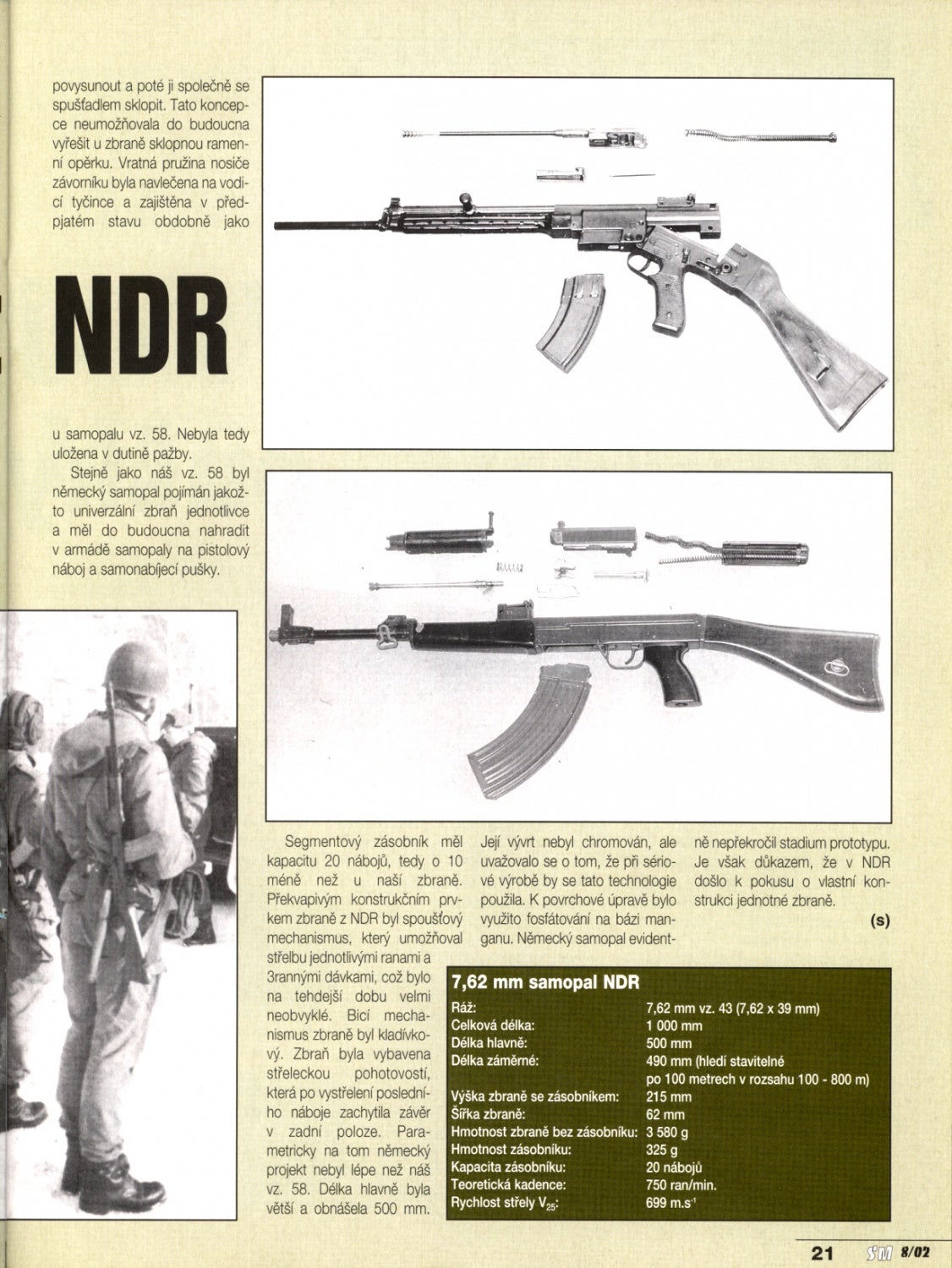The MP-44, also known as the “Sturmgewehr”, was a very influential weapon to post-war thinking. Even the Americans – who at the time rejected the “assault rifle” concept as we now know it – took notice and immediately began development in March of 1944 of a shorter round for infantry weapons, which later became both the .308 Winchester and 7.62 NATO rounds.
However, much less discussed is the direct line of ancestry of the MP-44 design as it continued post-war. The Gerät 06 and Gerät 06H that eventually led to the whole suite of Spanish and German roller retarded designs both were parts of a program for an improved, second generation assault rifle, but were each developments of Mauser, not Haenel, and mechanically had little to do with the famous Sturmgewehr.
There is a dearth of information on the post-war lineage of the Sturmgewehr which may lead some to assume there was no further development of the design after 1945. However, this is not the case! Below is an article in Czech giving us some tantalizing details of a post-war, improved MP-44 rifle, probably designed in East Germany:
The article was originally posted to the Internet on the forum Valka.cz, and shows a weapon that is clearly MP-44 derived, and just as clearly absolutely not a modified original rifle. The weapon is un-named; even the author of the article calls it simply “7.62mm automatic NDR”: the acronym presumably being Czech for “German Democratic Republic”, i.e., East Germany. The weapon has many fundamental improvements versus its parent; the article states it is much lighter than an original MP-44, at less than 8lbs without magazine (the MP-44 was considerably heavier, at between just under 10 pounds to over 11 pounds unloaded, depending on the example). Second, the rifle has a simplified stamped receiver design, probably made possibly by the use of much higher quality steel*. Third, the bolt carrier arrangement has been substantially improved; where the original MP-44 used a Bren-like unshrouded “claw” that is visible (and vulnerable) through the weapon’s ejection port, the post-war rifle uses a more modern bolt carrier arrangement that not only improve’s the mechanism’s mass ratio, but also protects the unlocking cams from dirt and debris. The return spring arrangement has also been improved, moved from the stock (where in the MP-44, it could be impeded by wood expansion in damp environments) to the receiver and partially telescoped inside the bolt carrier.
Other changes include a rear sight mounted to the rear of the receiver, front sight mounted to the gas block, unified selector/safety, and – of course, given the GDR’s status as a Warsaw Pact nation – chambering in the Soviet standard 7.62×39 cartridge, instead of the Nazi 7.92×33 round.
Though other details may be illuminated in the text of the article, I (unfortunately) do not read Czech. If any of our readers do, though, feel free to let us know in the comments about anything interesting you find!
*It was a firm requirement of the wartime machine carbine program that the weapon had to use as little alloy steel as possible – this was largely accomplished, but resulted in a weapon that was much heavier than necessary.
 Your Privacy Choices
Your Privacy Choices



